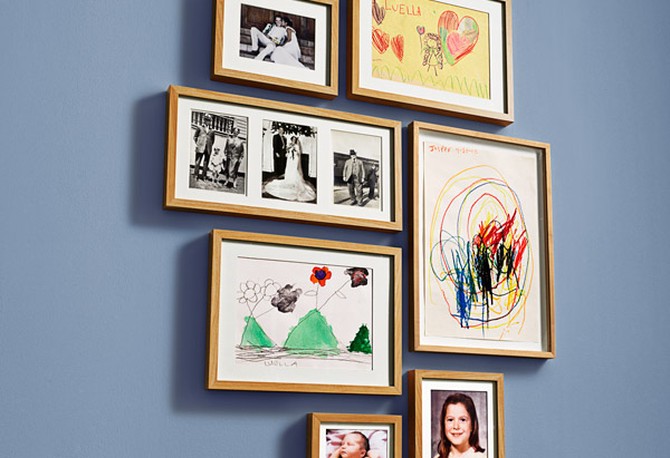What Kind of Clutterer Are You?
O's organizational expert, Peter Walsh, identifies five types of clutterers and helps each slay her mess.
By Meredith Bryan
The Sentimental Clutterer/Family Historian
Symptoms
Hoards baby clothes, kindergarten papier-mâché creations, and grade school report cards belonging to fully grown offspring—wrongly assuming said offspring will someday want them; stores acres of unsorted boxes of deceased relatives' clothing, tchotchkes, and war memorabilia in attic, basement, and closets.
Perpetrators
Besotted parents; empty nesters; women of a certain age who have suffered loss and/or who feel a responsibility to preserve family heirlooms and history.
1. Establish a hierarchy of value.
"You must distinguish between your grandfather's World War II medals and the box of receipts he used to support his tax claims in 1982," says Walsh. In other words, distill ten boxes of family mementos down to one containing only the most meaningful items. Having a hard time parting with your great-grandmother's musty aprons? "Remember, no one who loved you and wanted what's best for you would want your life and home overrun with their stuff," says Walsh.
2. Start a family history wall.
Walsh suggests framing a few old photos alongside shadowboxes containing your mother's favorite ceramic piece or her beloved recipe cards—the things that most remind you of her or "make your heart sing when you look at them," says Walsh. "When you treat the real treasures with honor and respect, it becomes easier to let the rest go."
3. Establish limits on kids' artwork.
If your children are still young, stop the pileup in its tracks by prominently displaying one or two of each kid's best efforts in an Ikea frame or under Plexiglas on the kitchen table. Each week or month, let the child pick a new favorite piece. Photograph all other items and store the photos in yearly albums (while quietly disappearing the originals).
Next: The bargain shopper/coupon clutterer
Hoards baby clothes, kindergarten papier-mâché creations, and grade school report cards belonging to fully grown offspring—wrongly assuming said offspring will someday want them; stores acres of unsorted boxes of deceased relatives' clothing, tchotchkes, and war memorabilia in attic, basement, and closets.
Perpetrators
Besotted parents; empty nesters; women of a certain age who have suffered loss and/or who feel a responsibility to preserve family heirlooms and history.
Walsh's Three-Step Plan
1. Establish a hierarchy of value.
"You must distinguish between your grandfather's World War II medals and the box of receipts he used to support his tax claims in 1982," says Walsh. In other words, distill ten boxes of family mementos down to one containing only the most meaningful items. Having a hard time parting with your great-grandmother's musty aprons? "Remember, no one who loved you and wanted what's best for you would want your life and home overrun with their stuff," says Walsh.
2. Start a family history wall.
Walsh suggests framing a few old photos alongside shadowboxes containing your mother's favorite ceramic piece or her beloved recipe cards—the things that most remind you of her or "make your heart sing when you look at them," says Walsh. "When you treat the real treasures with honor and respect, it becomes easier to let the rest go."
3. Establish limits on kids' artwork.
If your children are still young, stop the pileup in its tracks by prominently displaying one or two of each kid's best efforts in an Ikea frame or under Plexiglas on the kitchen table. Each week or month, let the child pick a new favorite piece. Photograph all other items and store the photos in yearly albums (while quietly disappearing the originals).
Next: The bargain shopper/coupon clutterer
Published 02/14/2012


